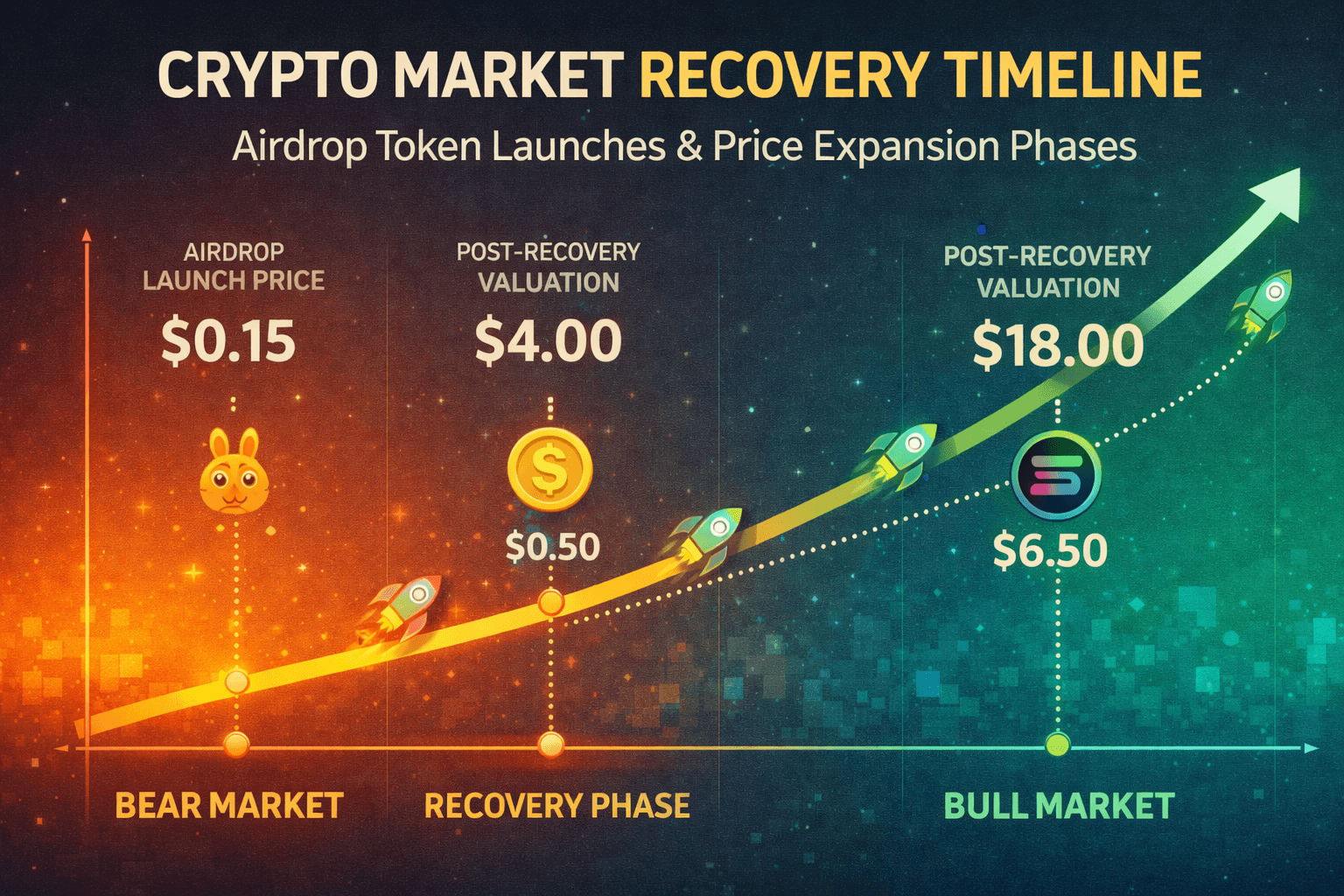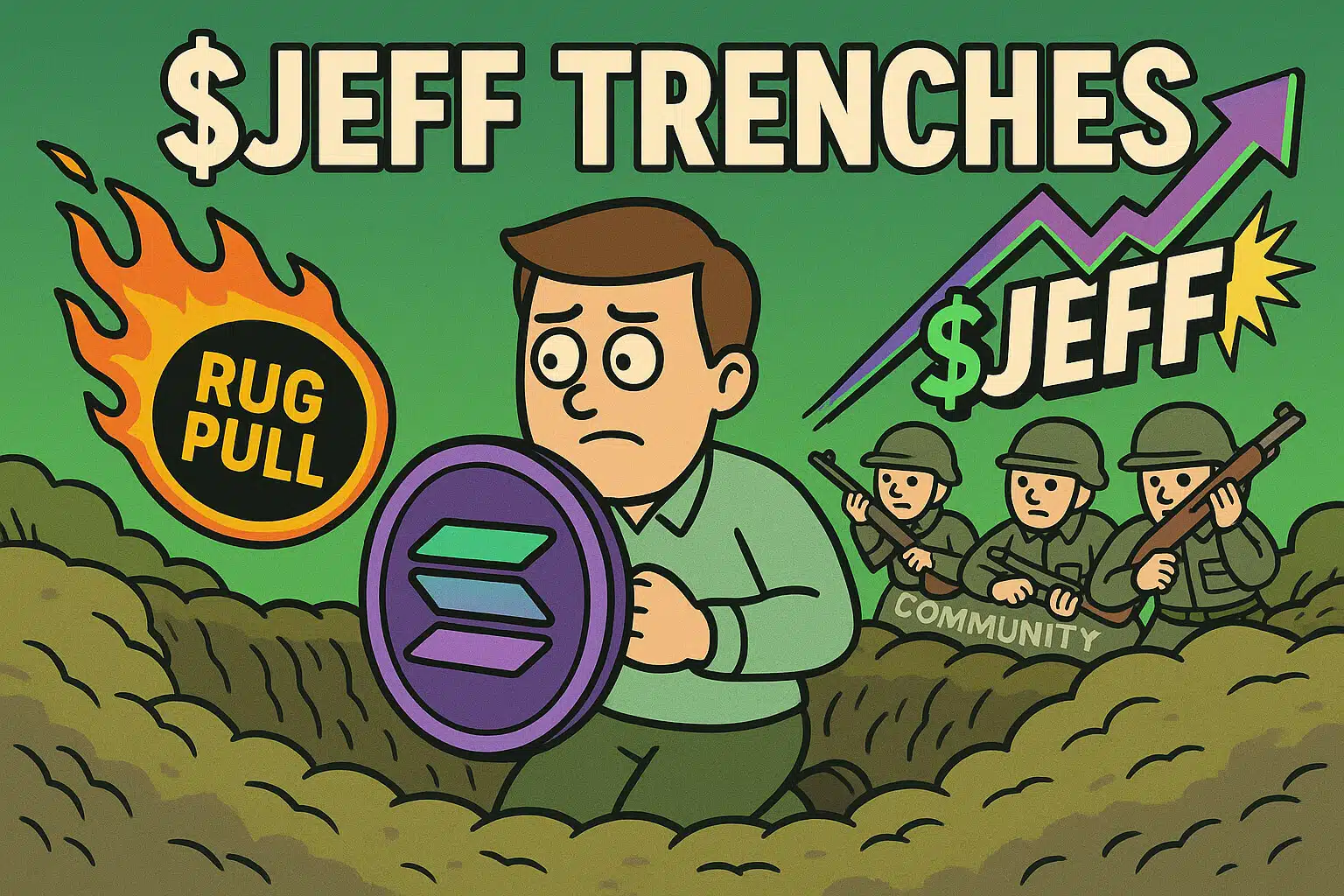Airdrops have become a common tool in the cryptocurrency world for promoting new tokens, driving community engagement, and rewarding early adopters. While airdrops are often effective in building initial hype, they also have significant effects on token price volatility. Many investors, both newcomers and seasoned traders, have experienced the sudden price swings that come with airdrop campaigns.
This article explores the impact of airdrops on token price volatility, the common trends observed in airdropped tokens, why they often trade below their initial listing price, and what investors can learn from these dynamics.
1. The Initial Listing Price Problem: Why Tokens Drop in Value
One of the most notable impacts of airdrops is the sudden price volatility that occurs shortly after a token’s launch. A recent analysis conducted by CoinRank found that a staggering 74.2% of analyzed airdropped tokens trade below their initial listing price. This suggests that immediate sell-offs are a common strategy, with many users choosing to convert their free tokens to USD or Bitcoin for immediate profit.
Why Do Airdropped Tokens Often Lose Value?
- Immediate Sell Pressure: Many people who receive airdropped tokens sell them right away to secure quick profits. This leads to a rapid sell-off, which significantly affects the price. Unlike tokens that are bought with intent to hold, airdropped tokens often have little emotional or financial attachment from recipients.
- High Initial Valuations: Some projects start with inflated valuations, leading to unrealistic price expectations. When airdropped tokens hit the market, the sell pressure serves as a , revealing that the initial valuation was too high.
- Yield Farmers: Yield farmers, who specialize in maximizing returns from such events, consistently sell airdropped tokens regardless of the price. This adds further downward pressure on the price.
The data suggests that in many cases, converting airdropped tokens immediately after listing to stable assets like USD or Bitcoin is the most profitable strategy. Holding these tokens long-term often results in a depreciation that outpaces any potential gains.
2. The Meme Coin Anomaly: When Airdrops Defy Expectations
While most airdropped tokens experience sharp price declines, there have been some anomalies. Meme coins, such as BONK and DEGEN, have been notable exceptions. These tokens achieved remarkable success, even when compared to more traditional crypto assets.
Why Did BONK and DEGEN Succeed?
- Low Initial Valuations: Both BONK and DEGEN had low initial valuations, which contributed to their success. With modest entry points, these tokens gained traction quickly as new users were more willing to take a chance on them.
- Surprise Factor: The airdrops were unexpected, and their distribution was designed to create excitement within their respective communities. For example, BONK aimed to drive engagement in the Solana ecosystem, while DEGEN was associated with Farcaster. The element of surprise, coupled with community support, allowed these tokens to outperform expectations.
While these tokens defied the general trend, it’s important to note that the meme coin success stories are rare. Many other meme-related tokens have quickly lost value, suggesting that the factors driving their initial price rise community enthusiasm and novelty, don’t always lead to sustainable growth.
3. Market Implications of Airdrop-Induced Volatility
The market implications of airdrop campaigns are significant, particularly because they often lead to sudden and dramatic price movements. For traders and investors, understanding these implications can help in making better decisions regarding how to handle airdropped tokens.
Key Market Implications:
- Short-Term vs. Long-Term Holding: The data from CoinRank indicates that holding airdropped tokens for the long term is often not profitable. In 74.2% of cases, these tokens end up trading below their listing price. Therefore, those who receive airdrops may find it advantageous to sell during the initial spike.
- Fully Diluted Valuation (FDV): Investors need to be wary of a project’s when evaluating airdrops. A high FDV suggests numerous tokens still to be unlocked, leading to potential oversupply and selling pressure. Those holding airdropped tokens need to consider whether sustained demand can absorb these unlocks.
- Price Feedback Mechanism: Airdrops serve as a price feedback mechanism for the market. If the token price falls dramatically after the airdrop, it’s often a signal that the project’s initial valuation was unrealistic.
For investors, it is essential to assess the market context and project fundamentals before deciding whether to hold or sell airdropped tokens. Recognizing the signs of overvaluation early can help make profitable decisions.

4. How Airdrops Lead to Price Swings: A Case Study
Airdrop campaigns often lead to price swings that can attract both short-term traders and long-term holders. Let’s look at an example of how an airdrop can impact token price volatility using the Uniswap (UNI) airdrop as a case study.
The Uniswap (UNI) Airdrop
In 2020, Uniswap conducted an airdrop of its governance token, UNI, to users who had interacted with the platform before a specific date. The initial excitement around receiving free tokens caused a surge in the price of UNI immediately after its listing.
Price Movements Post-Airdrop:
- Initial Spike: When UNI was first listed, many recipients were eager to cash in on their free tokens, which led to a spike in trading volume. The initial listing price climbed as buyers and sellers rushed to the market.
- Subsequent Decline: After the initial excitement settled, the price of UNI experienced a significant pullback. The market stabilized once the quick profit seekers had sold off their holdings.
This pattern is common across many airdropped tokens: an initial price surge driven by market hype, followed by a decline as the tokens become broadly available. For those who were quick to sell, the airdrop was very profitable, whereas long-term holders faced volatile price fluctuations.
5. Factors Contributing to Airdrop Price Declines
Several factors contribute to the price decline of airdropped tokens after they hit the market. Understanding these factors can help both projects and investors better navigate the risks associated with airdrops.
Contributing Factors:
- Excess Supply: The sudden availability of large amounts of tokens creates an oversupply in the market. If demand doesn’t meet this supply, the price inevitably falls.
- Lack of Immediate Utility: Many airdropped tokens do not have immediate utility, which discourages holders from keeping them. Without a clear use case, recipients are more likely to sell, leading to further price declines.
- Speculation and Yield Farming: Yield farmers often participate in airdrops to maximize short-term gains. Their tendency to sell tokens quickly increases the selling pressure, driving prices down.
The combination of oversupply, speculative selling, and lack of utility leads to the sharp price volatility often seen following airdrop campaigns.
Conclusion
The impact of airdrops on token price volatility is evident, with most tokens experiencing a sharp decline after their initial listing. The data suggests that the most profitable strategy for many participants is to sell airdropped tokens soon after receiving them. However, not all tokens follow the same pattern, meme coins like BONK and DEGEN have defied expectations, highlighting the unpredictable nature of the market.
For project teams, these findings suggest the need to reconsider airdrop strategies to avoid negative short-term price impacts. Instead of mass distributions, teams might explore more targeted airdrops to users with a demonstrated interest in the project, thereby fostering a community that supports the token long term.
Ultimately, for both investors and project teams, understanding the dynamics of airdrops and token price volatility is crucial for navigating the risks and making informed decisions that can maximize rewards.
For more in-depth analysis on how airdrops impact token price and strategies for maximizing airdrop value, visit our Crypto Airdrop Analysis Guides.
Stay Updated
For the latest updates on airdrops and market analysis, follow us on:
Stay informed with the latest crypto insights at FreeCoins24.io.
Special Offer
Want to trade tokens earned from airdrops? Sign up on Bybit today and enjoy up to $30,000 in deposit bonuses. Trade with confidence on a trusted platform.

















